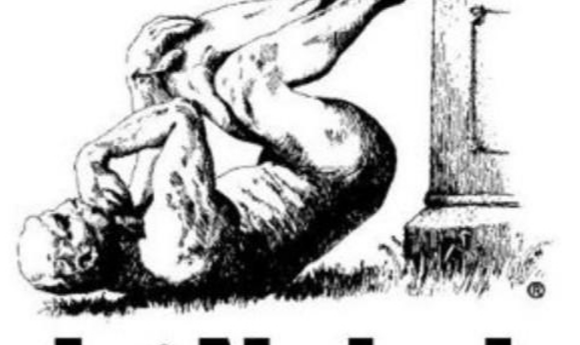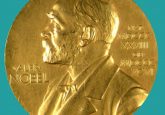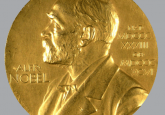Who are this year’s Ig Nobel Prize winners?

Celebrating the weird, wacky and unusual side of science, the Ig Nobel Prize is the jokey younger brother of the highly prestigious Nobel Prize. Aiming to honor research that not only makes you laugh but also makes you think, the awards have been running since 1991 and highlight the funny side of scientific research.
The Ig Nobel Prize in Medicine
Awarded to Silvano Gallus “for collecting evidence that pizza might protect against illness and death, if the pizza is made and eaten in Italy.”
Over the years, Gallus has shown that pizza has a variety of health benefits and may reduce risk of acute myocardial infarction or cancer. However, the pizza has to be authentic Italian and it must be noted that the beneficial effects may be more due to the tomatoes and olive oil, staples of a Mediterranean diet that have previously been shown to have various health benefits.
The Ig Nobel Prize in Medical Education
Awarded to Karen Pryor and Theresa McKeon “for using a simple animal-training technique to train surgeons to perform orthopedic surgery.”
The technique – called ‘clicker training’ – utilized the principle of operant conditioning to investigate whether a group of surgeons trained using positive reinforcement could be more precise than those taught via demonstration of the technique alone.
The Ig Nobel Prize in Biology
Awarded to Ling-Jun Kong, Herbert Crepaz, Agnieszka Górecka, Aleksandra Urbanek, Rainer Dumke and Tomasz Paterek “for discovering that dead magnetized cockroaches behave differently than living magnetized cockroaches.”
Investigating the magnetization dynamics in both alive and dead insects, the team found that magnetic deposits behaved differently whether in the corpse of dead cockroaches or in the bodies of ones still alive.
The Ig Nobel Prize in Anatomy
Awarded to Roger Mieusset and Bourras Bengoudifa “for measuring scrotal temperature asymmetry in naked and clothed postmen in France.”
Aiming to clarify the discrepancy across previous reports of scrotal temperatures, this French duo measured the temperature of the left and right scrotum of clothed and naked postmen and bus drivers. They found a lack of thermal symmetry in both the clothed and naked state, with the temperature of the left side often higher than the right.
The Ig Nobel Prize in Chemistry
Awarded to Shigeru Watanabe, Mineko Ohnishi, Kaori Imai, Eiji Kawano and Seiji Igarashi “for estimating the total saliva volume produced per day by a typical 5-year-old child.”
Following a study including 30 5-year olds, the team estimated that the average child produces 500ml of saliva per day. This is accounting for time spent asleep, time spent eating and time awake but not eating.
The Ig Nobel Prize in Engineering
Awarded to Iman Farahbakhsh “for inventing a diaper-changing machine for use on human infants.”
Farahbakhsh’s patented infant washer and diaper-changer apparatus claims to reduce the inconvenience associated with changing infant’s diapers while also reducing water consumption when washing the child.
The Ig Nobel Prize in Economics
Awarded to Habip Gedik, Timothy A Voss and Andreas Voss “for testing which country’s paper money is best at transmitting dangerous bacteria.”
Looking at the survival status of various strands of bacteria on banknotes from different countries, this father and son team found that the Romanian Leu held the most bacteria, yielding Staphylococcus aureus, Escherichia coli and Vancomycin-resistant enterococci even after washing. The Euro was found to enable the survival of Extended-Spectrum Beta-Lactamases but not MRSA, whereas the US Dollar was the other way around.
The Ig Nobel Prize in Peace
Awarded to Ghada A bin Saif, Alexandru Papoiu, Liliana Banari, Francis McGlone, Shawn G Kwatra, Yiong-Huak Chan and Gil Yosipovitch “for trying to measure the pleasurability of scratching an itch.”
Conducting an analysis of topographical variations in itch intensity, the team found that an experimentally induced itch was most intensely perceived on the ankle, though scratching the itch was most effective on the back.
The Ig Nobel Prize in Psychology
Awarded to Fritz Strack “for discovering that holding a pen in one’s mouth makes one smile, which makes one happier — and for then discovering that it does not.”
In 1988, Strack conducted a study into the facial feedback hypothesis and found results supporting the theory, stating that inhibiting or facilitating the ability to smile affected the participants response to the funniness of a cartoon.
Almost 20 years later, a Registered Replication Report project found this not to be the case…
The Ig Nobel Prize in Physics
Awarded to Patricia Yang, Alexander Lee, Miles Chan, Alynn Martin, Ashley Edwards, Scott Carver and David Hu “for studying how, and why, wombats make cube-shaped poo.”
A shape rarely found in nature, this work into how wombats make cubed poo addresses the mystery of cubic feces formation and could provide insights into novel manufacturing techniques for making non-cylindrical structures out of soft tissue.
Check out the rest of our coverage of this year’s Nobel Prizes: Chemistry, Physics and Physiology or Medicine.





